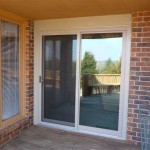Average Cost Of Installing a Cement Patio
Cement patios offer a durable and versatile outdoor living space. They provide a solid foundation for outdoor furniture, grilling areas, and various recreational activities. Understanding the average cost of installing a cement patio is crucial for homeowners planning such a project. This cost can vary significantly based on several factors, including the size of the patio, the complexity of the design, geographic location, and the contractor chosen.
This article will delve into the factors affecting the cost of cement patio installation, providing a comprehensive overview to help homeowners budget effectively and make informed decisions. The aim is to provide a realistic expectation of the expenses involved in creating a functional and aesthetically pleasing cement patio.
Key Cost Factors in Cement Patio Installation
Several elements contribute to the overall cost of installing a cement patio. These factors must be considered when estimating the budget for the project. Understanding these factors allows homeowners to anticipate potential cost increases and make appropriate adjustments to the design or scope of the project.
Size and Thickness: The size of the patio is a primary driver of cost. Larger patios require more materials and labor, directly increasing the overall expense. Cement is typically priced per square foot or cubic yard, so a larger patio will necessitate a greater quantity of cement. Furthermore, the thickness of the cement slab also affects the material cost. A thicker slab, often recommended for patios intended to support heavy objects or experience significant foot traffic, requires more cement. Common thicknesses range from 4 inches to 6 inches, with thicker slabs generally costing more.
Site Preparation: Proper site preparation is critical to the longevity and stability of a cement patio. This process involves clearing the area of vegetation, removing topsoil, grading the ground to ensure proper drainage, and compacting the soil. Uneven or unstable ground may require additional work, such as importing fill material or addressing drainage issues, which can significantly add to the cost. If existing structures need to be removed, such as old patios or landscaping features, this will also contribute to the site preparation expenses.
Cement Mix and Finish: The specific type of cement mix used can influence the price. Different mixes offer varying levels of durability, strength, and resistance to cracking. For example, a mix with added fibers or polymers might be chosen for enhanced performance in climates with extreme temperature fluctuations. The finish applied to the cement also affects the cost. A basic smooth finish is typically the least expensive option. However, decorative finishes, such as stamped concrete, exposed aggregate, or colored concrete, require specialized techniques and materials, resulting in a higher price. Stamped concrete, which mimics the look of brick, stone, or other materials, involves using molds and color hardeners, adding to the labor and material costs.
Labor Costs: Labor is a significant portion of the total cost. Experienced contractors with a proven track record typically charge higher rates. The complexity of the project also influences labor costs. Intricate designs, such as patios with curves, multiple levels, or built-in features, require more skilled labor and time to complete. The location of the project can also impact labor costs. Areas with a higher cost of living generally have higher labor rates for construction services. Getting multiple quotes from different contractors is essential to compare pricing and ensure a fair market rate.
Permits and Inspections: Depending on local regulations, a building permit may be required for installing a cement patio. The cost of the permit varies depending on the municipality and the size of the project. Inspections may also be required at different stages of the construction process to ensure compliance with building codes. These permits and inspections add to the overall cost of the project and should be factored into the budget. Failure to obtain the necessary permits can result in fines or the need to redo the work, leading to additional expenses.
Accessibility: Ease of access to the construction site can impact labor costs. If the site is difficult to access, requiring workers to transport materials over long distances or navigate obstacles, it will take more time and effort, increasing labor costs. Limited access may also necessitate the use of specialized equipment, such as smaller concrete mixers or wheelbarrows, which can further add to the expense. Consider whether there are any obstructions, such as fences or landscaping, that need to be temporarily removed to facilitate access.
Regional Costs: The geographic location of the project significantly influences the cost of materials and labor. Areas with a higher cost of living or a greater demand for construction services typically have higher prices. Material costs can also vary depending on the availability of cement and other supplies in the region. Shipping costs can add to the expense if materials need to be transported from distant suppliers. Consult with local contractors to get an accurate estimate of the prevailing costs in your area.
These key factors interrelate to determine the final cost of a cement patio installation. Careful planning and consideration of these factors are essential for effective budgeting and project management.
Breaking Down the Cost: Materials and Labor
To better understand the overall cost, it is helpful to break down the expenses into the primary components: materials and labor. By analyzing the individual costs associated with each category, homeowners can identify potential areas for cost savings and make informed decisions about their project.
Material Costs: The cost of materials includes the cement itself, as well as other necessary items such as gravel base, rebar (for reinforcement), forms, and any decorative elements. Cement is typically sold by the cubic yard, and the amount required will depend on the size and thickness of the patio. A gravel base is typically laid beneath the cement slab to provide drainage and stability. Rebar is often used to reinforce the cement, increasing its strength and resistance to cracking. Forms are used to contain the cement while it cures, and can be made of wood or metal. The cost of these materials can vary depending on the quality and quantity required. Decorative elements, such as color hardeners, stamps, or sealants, will add to the material cost. The cost of tools and equipment, such as concrete mixers or finishing tools, may also be included if the homeowner is handling the project themselves.
Labor Costs: Labor costs typically account for a significant portion of the total project cost. This includes the cost of site preparation, forming, pouring, finishing, and any decorative work. Experienced contractors charge higher hourly rates, but they also bring expertise and efficiency to the project, potentially saving time and money in the long run. The complexity of the design and the amount of time required to complete the project will also influence labor costs. Intricate designs, such as patios with curves or multiple levels, require more skilled labor and time to complete. The contractor may also charge for travel time or other incidental expenses. It is important to get a detailed quote from the contractor that outlines the specific tasks included in the labor cost.
The ratio of material costs to labor costs can vary depending on the project. For simpler projects, the material costs may be a larger proportion of the total cost. For more complex projects, the labor costs may be more significant. By understanding the breakdown of costs, homeowners can better negotiate with contractors and ensure they are getting a fair price.
Estimating the Total Cost and Potential Cost Savings
Accurately estimating the total cost of a cement patio installation requires careful consideration of all the factors discussed above. While a general estimate can be useful, it is essential to obtain detailed quotes from multiple contractors to get a more precise understanding of the costs involved. Furthermore, homeowners can explore various strategies to potentially reduce the overall expenses.
Obtaining Multiple Quotes: Obtaining quotes from at least three different contractors is highly recommended. This allows for comparison of pricing, scope of work, and contractor experience. Be sure to provide each contractor with the same detailed information about the project, including the size of the patio, the desired finish, and any specific requirements. Review the quotes carefully, paying attention to the breakdown of costs for materials and labor. Ask for clarification on any ambiguous items or potential hidden fees. Choose a contractor who is licensed, insured, and has a proven track record of successful patio installations.
Simplifying the Design: A simpler design can significantly reduce costs. Straight lines and basic shapes are easier to form and pour than curves or intricate patterns. Choosing a standard gray cement finish instead of a decorative finish can also save money. Consider eliminating built-in features, such as benches or planters, if budget is a concern. A simpler design can also reduce the amount of time required for installation, lowering labor costs.
DIY Site Preparation: If the homeowner is comfortable with physical labor, they may be able to save money by handling some of the site preparation tasks themselves. This could include clearing the area of vegetation, removing topsoil, and grading the ground. However, it is important to ensure that the site preparation is done correctly, as this is crucial to the stability of the patio. If unsure, it is always best to leave this task to the professionals.
Material Sourcing: Researching different suppliers for cement and other materials can potentially lead to cost savings. Compare prices from different suppliers, and consider buying in bulk if possible. However, be sure to factor in the cost of transportation when sourcing materials from distant suppliers. Consider using recycled or reclaimed materials, such as crushed concrete, as a base material. However, ensure that these materials meet the necessary quality standards.
Timing of the Project: The timing of the project can also affect the cost. Demand for construction services is typically higher during the spring and summer months, which can drive up prices. Consider scheduling the project during the off-season, such as fall or winter, when contractors may be more willing to offer discounts. However, be aware of weather conditions that may affect the installation process.
By carefully estimating the total cost, exploring potential cost savings, and obtaining multiple quotes from qualified contractors, homeowners can ensure that they are getting the best value for their cement patio installation project.

2024 Concrete Patio Cost Average To Pour A Angi

How Much Does A Concrete Patio Cost 2024 S

Average Concrete Patio Cost By Size Type And More Forbes Home

How Much Does A Concrete Patio Cost 2024 S

2024 Patio Cost Average To Build And Install A Angi

Guide How Much Does A Concrete Patio Cost

How Much Does It Cost To Build A Patio Forbes Home

Guide How Much Does Stamped Concrete Cost
The Pros And Cons Of Stamped Concrete Patios Driveways

Cost To Install A Patio 2024 Calculator
Related Posts








